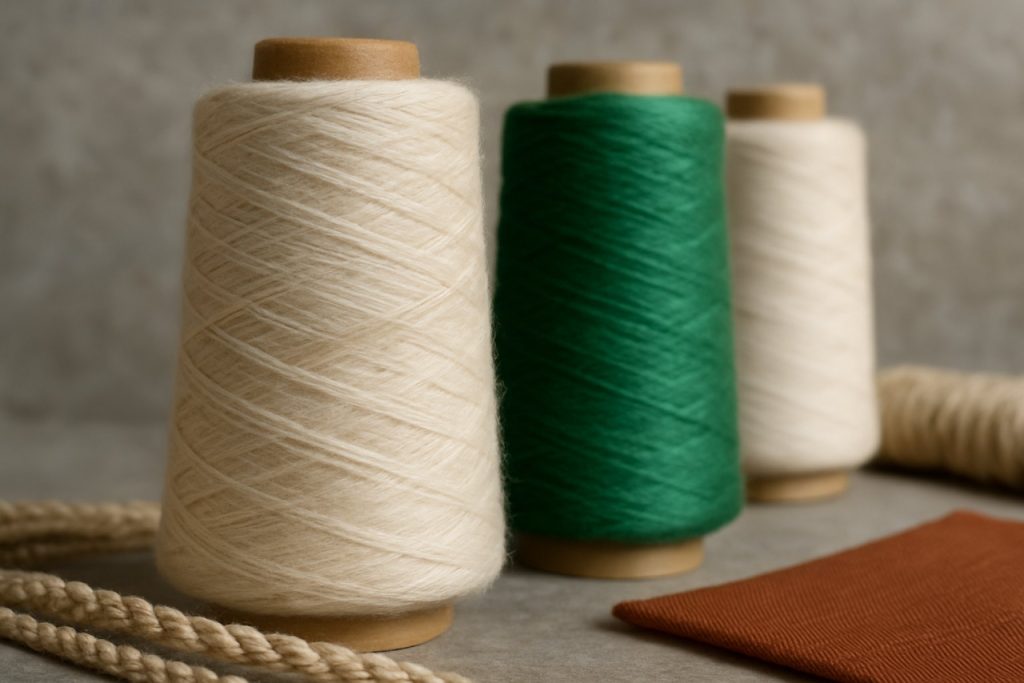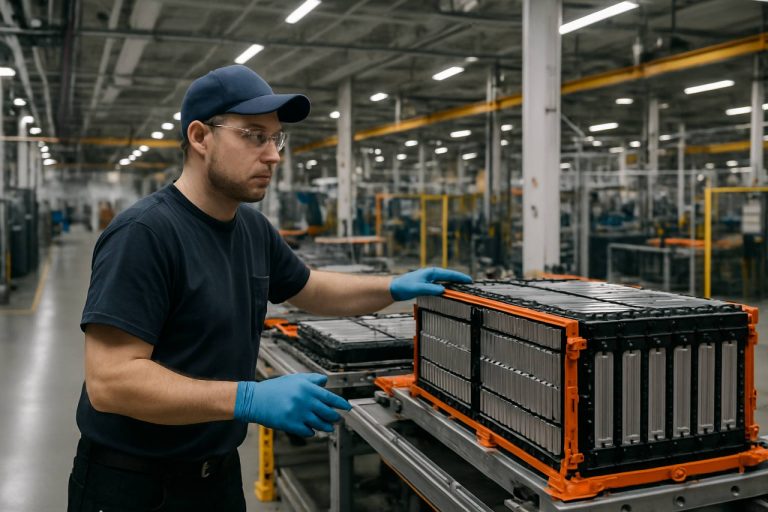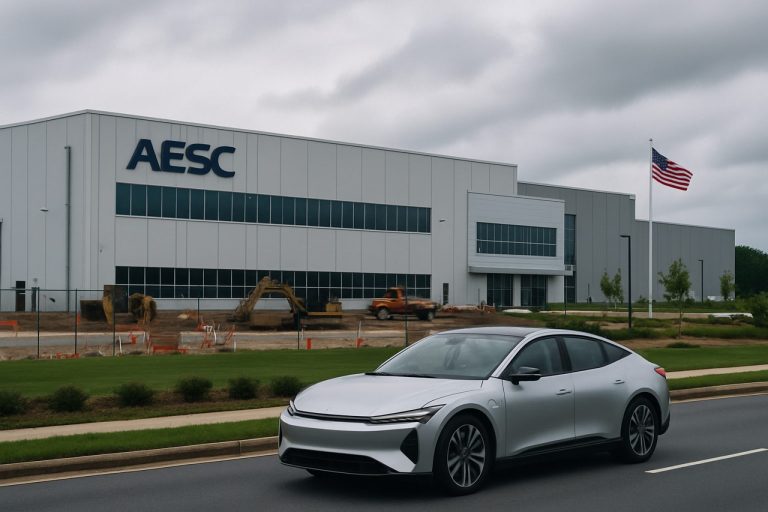
Biofabricated Textile Fibers Industry Report 2025: Market Size, Growth Drivers, and Strategic Insights for the Next 5 Years. Explore Key Trends, Competitive Dynamics, and Regional Opportunities in Sustainable Textiles.
- Executive Summary & Market Overview
- Key Technology Trends in Biofabricated Textile Fibers
- Competitive Landscape and Leading Players
- Market Growth Forecasts (2025–2030): CAGR, Revenue, and Volume Analysis
- Regional Analysis: North America, Europe, Asia-Pacific, and Rest of World
- Future Outlook: Emerging Applications and Investment Hotspots
- Challenges, Risks, and Strategic Opportunities
- Sources & References
Executive Summary & Market Overview
Biofabricated textile fibers represent a transformative innovation in the global textile industry, leveraging biotechnology to create fibers through processes such as microbial fermentation, cell culture, and protein engineering. Unlike conventional fibers derived from petrochemicals or natural sources like cotton, biofabricated fibers are produced by engineering microorganisms or cells to synthesize proteins or polymers that mimic or surpass the properties of traditional textiles. This approach offers significant sustainability advantages, including reduced water and land use, lower greenhouse gas emissions, and the potential for closed-loop, biodegradable materials.
As of 2025, the biofabricated textile fiber market is experiencing rapid growth, driven by increasing consumer demand for sustainable fashion, regulatory pressures to reduce environmental impact, and technological advancements in synthetic biology. According to Grand View Research, the global market for bio-based and biofabricated fibers is projected to reach multi-billion-dollar valuations by the end of the decade, with a compound annual growth rate (CAGR) exceeding 15% from 2023 to 2030. Key industry players such as Bolt Threads, Modern Meadow, and Spiber Inc. are at the forefront, commercializing fibers like mycelium-based leather, spider silk proteins, and collagen-based textiles.
Major apparel brands and luxury houses are increasingly partnering with biofabrication startups to integrate these next-generation materials into their product lines. For example, Adidas and Stella McCartney have piloted products using mycelium leather, while Patagonia has invested in spider silk alternatives for performance wear. These collaborations are accelerating the commercialization timeline and expanding consumer awareness of biofabricated textiles.
Despite the promise, the sector faces challenges related to scaling production, cost competitiveness, and regulatory approval. However, ongoing investments and technological breakthroughs are expected to address these barriers. The European Union’s Green Deal and the U.S. Department of Energy’s support for bio-based manufacturing further underscore the policy momentum behind this market shift (European Commission, U.S. Department of Energy).
In summary, biofabricated textile fibers are poised to redefine the textile value chain in 2025 and beyond, offering a compelling solution to the environmental and ethical challenges facing the fashion and textile industries.
Key Technology Trends in Biofabricated Textile Fibers
Biofabricated textile fibers are at the forefront of innovation in the textile industry, leveraging biotechnology to create sustainable alternatives to conventional fibers such as cotton, polyester, and silk. As the sector matures in 2025, several key technology trends are shaping the development, scalability, and adoption of these next-generation materials.
- Precision Fermentation and Synthetic Biology: Advances in precision fermentation are enabling the production of high-performance fibers by engineering microorganisms to secrete protein-based polymers. Companies like Bolt Threads and Spiber Inc. are using genetically modified yeast and bacteria to produce spider silk and other protein fibers at commercial scales, offering tunable properties such as strength, elasticity, and biodegradability.
- Cellular Agriculture for Cellulose and Mycelium Fibers: The use of plant cells and fungal mycelium is expanding, with startups like MycoWorks developing mycelium-based textiles that mimic the look and feel of leather. These materials are grown in controlled environments, reducing the need for arable land and water while enabling unique material properties and design flexibility.
- Enzymatic Processing and Green Chemistry: Enzyme-driven processes are being adopted to convert biomass into textile-grade fibers with minimal environmental impact. For example, Modern Meadow employs biofabrication techniques that use enzymes to assemble collagen proteins into leather-like materials, bypassing traditional tanning and dyeing processes that are resource-intensive and polluting.
- Integration with Digital Manufacturing: Digital tools such as 3D bioprinting and computer-aided design are increasingly integrated into biofabrication workflows. This allows for precise control over fiber structure and properties, enabling the creation of bespoke textiles tailored to specific performance requirements or aesthetic preferences.
- Scale-Up and Commercialization: The transition from lab-scale innovation to industrial-scale production is accelerating, supported by partnerships between biotech firms and established apparel brands. For instance, Adidas and Stella McCartney have piloted products using biofabricated fibers, signaling growing market readiness and consumer interest.
These technology trends are collectively driving the biofabricated textile fiber market toward greater sustainability, performance, and design versatility, positioning it as a transformative force in the global textile industry in 2025.
Competitive Landscape and Leading Players
The competitive landscape for biofabricated textile fibers in 2025 is characterized by a dynamic mix of established material science companies, innovative startups, and strategic partnerships with major apparel brands. The sector is driven by the growing demand for sustainable alternatives to conventional fibers, such as cotton and polyester, and the increasing regulatory and consumer pressure to reduce the environmental impact of the fashion industry.
Key players in the biofabricated textile fiber market include:
- Bolt Threads: A pioneer in the field, Bolt Threads has developed Mylo™, a mycelium-based leather alternative, and Microsilk™, a protein-based fiber inspired by spider silk. The company has secured collaborations with major brands such as Adidas and Stella McCartney, positioning itself as a leader in commercializing biofabricated fibers.
- Modern Meadow: Specializing in biofabricated materials, Modern Meadow uses engineered yeast to produce collagen, which is then assembled into Zoa™, a biofabricated leather. The company’s partnerships with luxury and performance brands underscore its influence in the premium segment.
- Spiber Inc.: Based in Japan, Spiber has developed Brewed Protein™, a family of protein-based fibers produced via microbial fermentation. Spiber’s collaborations with Goldwin Inc. and The North Face Japan have brought biofabricated fibers to the outdoor apparel market.
- Amyris, Inc.: Leveraging synthetic biology, Amyris produces bio-based squalane and is expanding into biofabricated fibers through partnerships and technology licensing.
- GALY: This startup uses cellular agriculture to grow cotton in labs, offering a direct alternative to traditional cotton farming with significantly reduced resource use.
In addition to these leaders, the market is witnessing increased activity from textile giants and chemical companies investing in or acquiring biofabrication startups to secure early access to next-generation materials. For example, Adidas and Stella McCartney have both piloted products using biofabricated fibers, signaling mainstream interest and accelerating commercialization efforts.
According to Grand View Research, the competitive intensity is expected to increase as more players enter the market and as scale-up challenges are addressed. Intellectual property, production scalability, and brand partnerships will remain key differentiators among leading players in 2025.
Market Growth Forecasts (2025–2030): CAGR, Revenue, and Volume Analysis
The biofabricated textile fibers market is poised for robust growth between 2025 and 2030, driven by increasing demand for sustainable materials in the fashion, automotive, and home textiles sectors. According to projections from Grand View Research, the global market for biofabricated textile fibers is expected to register a compound annual growth rate (CAGR) of approximately 18% during this period. This surge is attributed to advancements in synthetic biology, consumer preference for eco-friendly products, and regulatory pressures to reduce the environmental impact of traditional textile manufacturing.
Revenue forecasts indicate that the market, valued at around USD 1.2 billion in 2025, could surpass USD 2.7 billion by 2030. This growth trajectory is underpinned by the scaling up of production capacities by key players such as Bolt Threads, Modern Meadow, and Spiber Inc., who are commercializing biofabricated fibers like mycelium-based leather and spider silk analogs. The adoption of these fibers by major apparel brands is expected to further accelerate market expansion.
In terms of volume, the market is projected to grow from approximately 8,000 metric tons in 2025 to over 20,000 metric tons by 2030, as reported by MarketsandMarkets. This increase reflects both the rising number of commercial-scale facilities and improvements in yield and process efficiency. The Asia-Pacific region is anticipated to lead in volume growth, driven by investments in biomanufacturing infrastructure and the presence of large textile production hubs.
- CAGR (2025–2030): ~18%
- Revenue (2025): USD 1.2 billion
- Revenue (2030): USD 2.7 billion+
- Volume (2025): 8,000 metric tons
- Volume (2030): 20,000+ metric tons
Overall, the biofabricated textile fibers market is set for significant expansion, with technological innovation, sustainability mandates, and consumer awareness acting as primary growth catalysts through 2030.
Regional Analysis: North America, Europe, Asia-Pacific, and Rest of World
The global market for biofabricated textile fibers is experiencing dynamic regional growth patterns, shaped by technological innovation, regulatory frameworks, and consumer demand for sustainable materials. In 2025, North America, Europe, Asia-Pacific, and the Rest of the World (RoW) each present distinct opportunities and challenges for industry stakeholders.
North America remains a leader in biofabricated textile fiber innovation, driven by robust R&D investments and a strong ecosystem of startups and established players. The United States, in particular, is home to pioneering companies such as Bolt Threads and Modern Meadow, which are advancing mycelium- and protein-based fibers. Supportive regulatory policies and growing partnerships with major apparel brands are accelerating commercialization. The region’s market is further buoyed by consumer preference for eco-friendly products and the presence of sustainability-focused retailers.
Europe is characterized by stringent environmental regulations and ambitious circular economy targets, making it a fertile ground for biofabricated fiber adoption. The European Union’s Green Deal and initiatives like the Textile ETP are fostering innovation and cross-border collaboration. Companies such as Spinnova (Finland) and AMSilk (Germany) are at the forefront, leveraging government grants and public-private partnerships. European consumers’ high awareness of sustainability issues is translating into increased demand for bio-based textiles, particularly in fashion and automotive applications.
Asia-Pacific is emerging as a high-growth region, propelled by its dominant role in global textile manufacturing and rising environmental consciousness. Countries like Japan, South Korea, and China are investing in biofabrication technologies, with companies such as Spiber Inc. (Japan) scaling up production of protein-based fibers. The region benefits from cost-effective manufacturing infrastructure and a large, increasingly eco-aware consumer base. However, challenges remain in terms of scaling up production and integrating biofabricated fibers into established supply chains.
Rest of the World (RoW) encompasses Latin America, the Middle East, and Africa, where adoption is nascent but growing. Market expansion is primarily driven by multinational brands seeking to diversify sourcing and by local initiatives focused on sustainable development. While infrastructure and investment levels lag behind other regions, pilot projects and collaborations are laying the groundwork for future growth.
Overall, regional dynamics in 2025 reflect a convergence of innovation, policy, and market demand, with North America and Europe leading in technology and regulation, Asia-Pacific in manufacturing scale, and RoW in emerging opportunities.
Future Outlook: Emerging Applications and Investment Hotspots
The future outlook for biofabricated textile fibers in 2025 is marked by rapid innovation, expanding applications, and increasing investor interest. As sustainability imperatives reshape the global textile industry, biofabricated fibers—engineered from microbial fermentation, plant-based proteins, or mycelium—are poised to disrupt traditional supply chains and unlock new market opportunities.
Emerging applications are moving beyond niche luxury fashion into mainstream apparel, sportswear, automotive interiors, and even medical textiles. Companies like Bolt Threads and Modern Meadow are scaling up production of mycelium- and protein-based fibers, targeting partnerships with major brands such as Adidas and Stella McCartney. In 2025, the focus is on improving fiber performance—such as durability, elasticity, and moisture management—to meet the rigorous demands of activewear and technical textiles.
Medical and healthcare textiles represent another promising frontier. Biofabricated fibers with inherent antimicrobial properties or biocompatibility are being developed for wound dressings, implantable fabrics, and smart wearables. The convergence of biofabrication and digital manufacturing (e.g., 3D bioprinting) is expected to accelerate the customization of medical textiles, as highlighted in recent analyses by Grand View Research.
From an investment perspective, 2025 is witnessing a surge in venture capital and corporate funding. According to CB Insights, global investment in biofabricated materials startups surpassed $1.2 billion in 2024, with a significant portion directed toward textile applications. Hotspots include North America and Western Europe, where regulatory support and consumer demand for sustainable products are strongest. Asia-Pacific is also emerging as a key region, driven by textile manufacturing hubs in China, India, and Southeast Asia seeking to decarbonize their supply chains.
- Key investment themes include scaling biomanufacturing infrastructure, developing drop-in fiber solutions compatible with existing textile machinery, and advancing circular economy models through fiber recycling and biodegradability.
- Strategic collaborations between startups, established textile producers, and global fashion brands are expected to accelerate commercialization and market adoption.
In summary, 2025 is set to be a pivotal year for biofabricated textile fibers, with expanding applications, robust investment, and a clear trajectory toward mainstream adoption across multiple industries.
Challenges, Risks, and Strategic Opportunities
The biofabricated textile fibers sector faces a complex landscape of challenges, risks, and strategic opportunities as it moves toward broader commercialization in 2025. One of the primary challenges is scaling up production from pilot to industrial levels while maintaining consistency, quality, and cost competitiveness. Many biofabrication processes, such as microbial fermentation or cell culture, require significant capital investment in bioreactors and downstream processing infrastructure. This can result in higher initial costs compared to conventional fibers, making it difficult for biofabricated products to compete on price, especially in the mass market segment (McKinsey & Company).
Supply chain risks are also prominent. The sector relies on specialized feedstocks (e.g., sugars, agricultural byproducts) and advanced biotechnological inputs, which can be subject to volatility in availability and price. Additionally, the regulatory environment for novel biofabricated materials remains uncertain in many jurisdictions, with evolving standards for safety, labeling, and environmental impact assessment. This regulatory ambiguity can delay product launches and increase compliance costs (Textile Exchange).
Consumer acceptance poses another hurdle. While sustainability is a growing priority, there is still limited awareness and understanding of biofabricated fibers among end-users. Overcoming skepticism about performance, durability, and safety compared to traditional fibers is essential for market penetration. Brands must invest in transparent communication and third-party certifications to build trust (Boston Consulting Group).
Despite these challenges, strategic opportunities abound. The fashion and textile industries are under increasing pressure to decarbonize and reduce reliance on petrochemical-based fibers. Biofabricated fibers offer a compelling value proposition for brands seeking to differentiate through sustainability and innovation. Early movers can secure premium positioning and forge partnerships with leading apparel companies, as seen in collaborations between biofabrication startups and global brands (Stella McCartney).
- Strategic investments in process optimization and scale-up can drive down costs and improve margins.
- Vertical integration or long-term supply agreements can mitigate feedstock and supply chain risks.
- Engagement with regulators and standards bodies can help shape favorable policy frameworks.
- Consumer education campaigns and eco-labeling can accelerate adoption and build brand loyalty.
In summary, while the path to mainstream adoption of biofabricated textile fibers is fraught with operational, regulatory, and market risks, companies that proactively address these challenges stand to capture significant strategic advantage in the evolving textile landscape.
Sources & References
- Grand View Research
- Bolt Threads
- Modern Meadow
- Spiber Inc.
- Stella McCartney
- Patagonia
- European Commission
- MycoWorks
- Spiber Inc.
- Goldwin Inc.
- Amyris, Inc.
- MarketsandMarkets
- Spinnova
- AMSilk
- McKinsey & Company
- Textile Exchange



